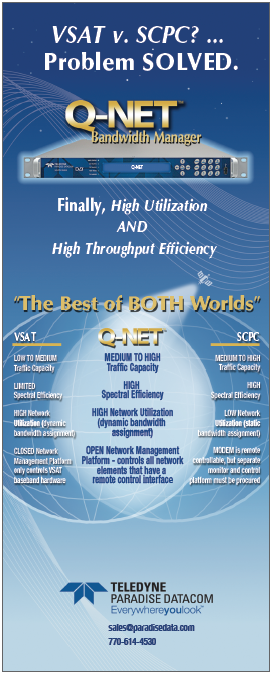With approximately 7.5 million units in service worldwide out of a total available market that is close in number to 300 million commercial vehicles, the Telematics industry shows huge business potential.

Among numerous industries, fleet management and vehicle leasing companies are deriving significant business efficiencies due to various telematics’ applications.
For instance, one of the key concerns of fleet operators is managing unforeseen budgeting risks arising out of unscheduled maintenance of vehicles. Machine-to-Machine (M2M) technologies enable operators to provide real-time event monitoring with real-time information pertaining to transmission, engine performance and other pertinent vehicle health parameters.
Visibilities into these aspects allow operators to foresee probable maintenance events early on and help them budget maintenance costs. Leasing companies and fleet management companies can significantly reduce their business risks by reducing operating costs through focused budgetary management. Additionally, they can also pre-empt potential heavy vehicle maintenance costs by taking corrective repair measures before such issues arise, thereby preventing extensive damage to a vehicle or its parts.
Streamline Drivers—Increase Efficiency
M2M telematics applications and technologies can also help fleet management companies streamline their employee management processes through the regular monitoring of drivers and other staff that are associated with vehicles. These systems help operation managers understand driver behavior, which includes actions such as start and end of a work day, stops control, private activity time, speeding and unnecessary braking, improper shifting of gears, tire pressure and break down monitoring, and so on. Telematics brings to the forefront discipline and other driver training and development aspects.
Deliver In Time
Additionally, M2M will also help ensure timely delivery by effectively tracking the shipment and route optimization by using location based systems and GPS devices. This is possible as M2M technologies offer geo-fencing capabilities that enable corporations operating fleets to alert drivers, should that individual, or the vehicle, travel off limits geographically—this assists in ensuring more productive deliveries.
This can result in a huge potential business gain as operators will significantly reduce shipment delay penalties. Dispatch can instantly identify trucks in the vicinity of a new call for pick-up, enabling the business to achieve
cost-efficient routing as well as meeting customer service expectations.
The need and cost associated with purchasing and maintaining cell phones for drivers is also eliminated.
Apart from fleet management and vehicle leasing companies, insurance companies, public transportation agencies, law enforcement and emergency response agencies are also turning to M2M technologies and applications to enhance efficiencies and business profitability.
Reduce Accidents + Insurance Costs
For instance, insurance companies are reaping significant benefits across the globe. According to one of U.K.’s largest insurance companies, M2M and satellite based technologies have led to a reduction of 20 percent in crashes that have involved young drivers. Insurance companies have started calculating their premiums based on driver behavior through an M2M device integrated into the vehicle. This includes collecting data on braking and acceleration, cornering, speed and what time of day the car is driven. The data is then used to calculate insurance premiums—the better the driver, the lower the premium. (See Technology Is Reshaping Vehicle Insurance later in this article.)
Solutions For A Market
Telit is already engaged in many solutions that help to solve the challenges modern fleet managers are facing. Consider, for example, a general preference for the use of CDMA over GPRS in some regions—or that the migration from 2G to 3G will happen faster than expected. Telit’s new 910 family offers pin-to-pin compatible footprint in 2G, 3G, CDMA and EVDO modules, thereby allowing service providers to target all markets with just a single board.
Governments are imposing the use of one satellite positioning network over another, or ordering higher location accuracy for some markets, a situation that is of concern to service providers. Telit is able to solve that challenge, as the company’s new Jupiter JN family offers GPS only and GPS/GLONASS modules with compatible footprints—this reduces even more the number of required boards.
Another key challenge for fleet managers is roaming and addressing new regions without going through time consuming carrier agreements and selection. Telit is able to provide, through our new business unit, m2mAIR, value-added services that include global coverage and flexible rate plans. Bundled with Telit’s wireless module technology, these services enable M2M solution providers to easily create and manage their applications, reducing the total-cost-of–ownership (TCO) necessary to operate and support M2M user-applications, all the while ensuring highest quality and reliability.
Technology Is Reshaping Vehicle Insurance
The use of M2M technology is also more than evident with the use of usage-based insurance (UBI). UBI promises tangible benefits to consumers, the industry and society at large.
Usage-based insurance (UBI) represents a major shift in the way car insurance risks are assessed. Until now, these risks were assessed based on static, statistical data such as age, gender, car model and so on. The application of telematics technology enables insurers to make objective assessments of risk based on real-time, dynamic data-like mileage, areas traveled, time of day, keeping to speed limits, engine RPM and fuel level, as well as driver behavior.
Insurers benefit from the ability to detect and retain the majority of the lowest-risk drivers. In return, drivers can enjoy significant discounts on their premiums. Better yet, awareness of being assessed in real-time provides psychological conditioning—ultimately encouraging better driver behavior to the benefit of society.

When automotive satellite navigation (SATNAV) systems exploded in popularity, UBI apps for smartphones began to infiltrate the market. While smartphones possess the requisite functionality, including sensors to detect acceleration, braking and cornering, they suffer from usability and reliability issues. As a result, insurers tend to prefer in-vehicle, on-board diagnostics (OBD) dongles over the use smartphone apps. Here’s why...
Smartphone Issues
For insurers, free UBI trials allow smartphone services to be employed as a “teaser” that: (a) introduces the concept; (b) allows drivers to see their driving behavior at the end of the trial; and (c) informs them about the potential reduction in their premium if they drive carefully.
Nevertheless, they remain problematic. A smartphone may not always be “on” when the car is driven. Or, the app may not be compatible and certified for use with the phone’s operating system or platform. In addition, in almost all international jurisdictions, courts could find insurers liable for negligence and damages when there is a “better” solution available—particularly in the event of life-saving applications such as event emergency response.
Dedicated In-Vehicle Devices
By contract, in-vehicle OBD-II data loggers are unobtrusive, provide more accurate driving data, are inexpensive and easy to install. Used in tandem with a smartphone, a hybrid solution can combine the data quality of the installed device with customer-friendly features like on-screen displays.
More importantly, UBI solutions based on OBD-II in-vehicle devices address the concerns of the insurance industry and regulators. For example:
• Fairness: Regardless of vehicle type, demographics or socio-economic status, all insured drivers are measured the same way
• Reliability: A dedicated hardware solution ensures that the connectivity between the vehicle and provider is controlled and timely
• Security: Dedicated hardware significantly reduces the potential for fraud
• Undistracted driving: Data loggers do not require user interaction— potentially preventing the disastrous consequences of cell-phone-induced distraction while driving
Storing + Analyzing the Data
UBI can generate massive amounts of data. A single vehicle can produce nearly 200K data points in a year. Even with smart filtering of raw data, and/or sorting that information to reduce carrier costs, there’s no doubt much UBI “Big Data” will be generated over the coming years. As a result, the number of innovative, cloud-based solutions which enable visual analytics are on the rise. Applied to the insurance space, they can present driver data in an easy-to-understand, graphical interface.
Though smartphone popularity continues to rise, the use of UBI smartphone apps will remain problematic. The regulatory climate is unfavorable and the legal risks are significant.
Dedicated solutions based on dedicated hardware provide an ideal alternative with robust results that address the requirements of both the industry and regulators.


